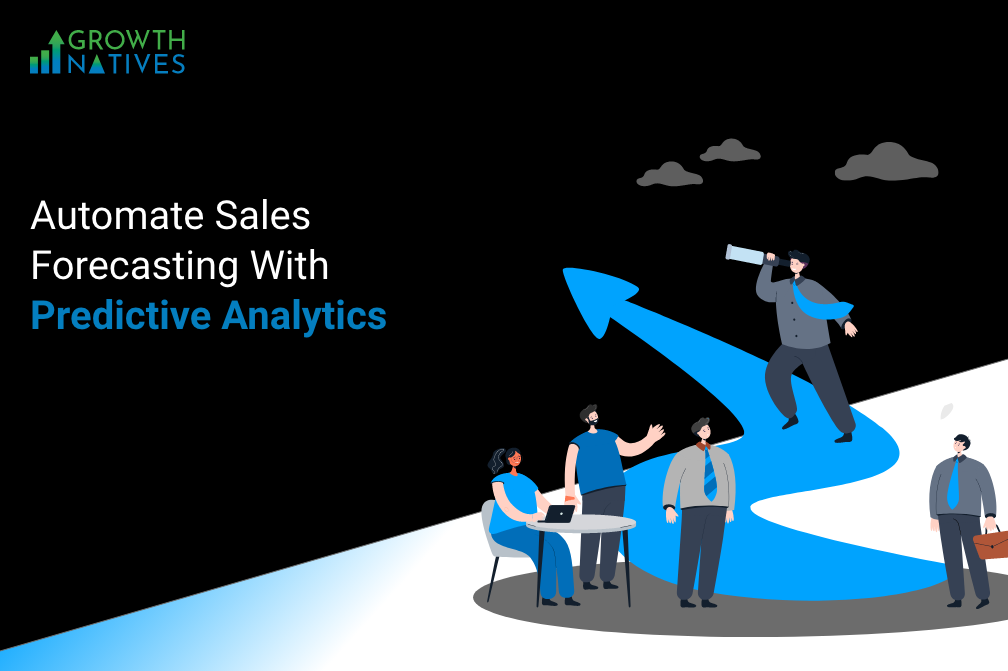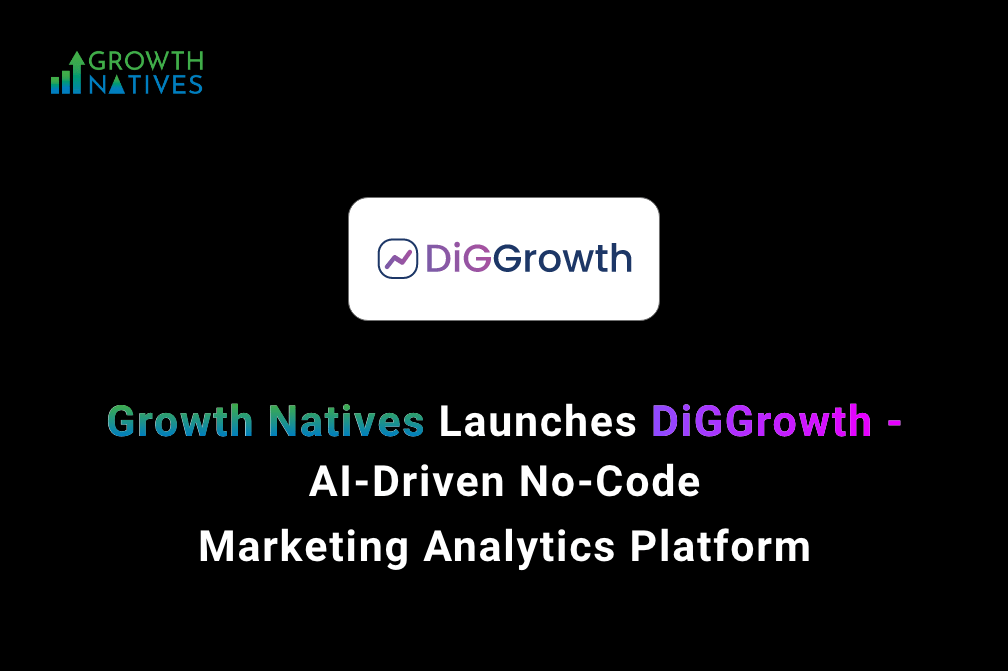
How Predictive Analytics Helps With Automated Sales Forecasting and More
By Sakshi Arora
Jun 10, 20227 min read
Did you know that the global predictive analytics market is expected to reach $35.45 billion by 2027, growing at a CAGR of 21.9% between 2020 and 2027?
If that doesn’t sound startling enough, how about more than 50% of top businesses using predictive analytics as a key tool in decision making?
As automation and artificial intelligence (AI) take center stage in business decisions, more organizations are using predictive analytics to forecast sales, increase profits, and streamline their operations.
Sales forecasting is seeing wide use of predictive analytics. It is estimated that an average salesperson spends more than 2.5 hours every week projecting sales. However, without a data-driven approach, 75% of those projections are likely to be inaccurate.
The use of predictive analytics can turn the tables and let businesses make smarter decisions, not only related to sales forecasting but also budgeting, setting goals, and prospecting. In this write-up, we shall see what sales forecasting with predictive analytics looks like, its benefits, and practical application in the industry.
What Is Predictive Analytics?
Predictive analytics is the use of data, stats, modeling techniques, algorithms, and machine learning to evaluate the likelihood of future outcomes based on current and historical data. Instead of the traditional approach to analytics that is focused on analyzing past data and evaluating performance, it is a forward-thinking approach. In technique, historical data helps in gaining insights into the future.

Sales forecasting is one of the best and most widely used applications of predictive analytics. This approach can help better anticipate the behavior of the target audience, understand their changing aspirations, and improve marketing campaigns for higher conversions.
Predictive Analysis – WHY and HOW
Before we delve into the benefits of predictive analytics, it is important to understand the ‘WHY’ and the ‘HOW’ behind this approach. The biggest motivation behind the use of this technique is to improve the accuracy of sales forecasts and reduce the scope for error.
Predictive analytics lets organizations adopt a fully automated sales forecasting process with the use of real-time data. This allows businesses to spot emerging opportunities early and at the same time, use resources better for improved productivity.
Benefits of Using Predictive Analytics
Predictive analytics involves analyzing large volumes of data to ensure improved decision-making. It helps organizations go beyond what happened and gain insights into the opportunities and risks for the future. This is why it’s important that you employ this process to automate sales forecast and other areas:
- Accurate Sales Forecast – Did your sales go up during the last holiday season? Are your production unit, warehouses, and supply chain geared up to meet the potential increase in demand?
This technique can help study the micro and macro factors in your sales forecast. Your business would be in combat mode to fight competition and leverage the upcoming opportunity.
- Know Your Customers – The buying patterns and aspirations of customers can change without warning and the inability to map these changes can lead to your downfall. Remember Kodak, Nokia, and Blackberry? Thus, it is important to identify the pattern in sales and know the aspirations of your existing and potential customers.
With predictive analytics, you will understand your customers and their changing aspirations. This allows you to meet them and remain competitive in the market.
- Augment Campaign Management – Marketing campaigns play a key role in your organization’s growth. Using this process, you will be able to identify KPIs such as campaign engagement, conversion rates, and campaign visibility. All of these help in improving the success of your marketing campaign and meeting end goals.
- Improve Customer Satisfaction – The inability to satisfy customers can be the greatest undoing for any business. It is important to keep customers happy and engaged, resolve their problems, and assert the benefits they enjoy in this relationship.
This advanced statistical technique can help you plan your marketing strategy to keep the customers engaged and maintain a high retention rate.
- Identify and Mitigate Risks – In a dynamic world, your organization will always face headwinds. Rising energy prices, global conflicts, and lack of access to raw materials are some of the risks that most global businesses face. It is important to identify these risks beforehand and mitigate them in time to remain competitive in the game.
- Improve Asset Utilization – Optimal asset utilization can help businesses reduce operational costs and increase profits. With predictive analytics, you can achieve this as it offers deep insights into the utilization of human and non-human assets. Based on past data, you can easily identify and address the bottlenecks in the business processes.
Examples of Predictive Analytics in the Industry
Today, businesses across industries use predictive analytics. Let us look at some examples to see how different industries are using this technique to increase sales and mitigate risks.
Ecommerce
This industry sees the widest use of predictive analytics. For instance, while buying a printer you might come across a combo package with ink supplies bundled under “Frequently bought together”. It is known as cross-selling where analytics uses buyer habits to come up with suggestions of products that are bought together. Online stores also use customers’ browsing history to create product bundles with additional discounts in what is termed as up-selling.
Banking & Financial Services
When billions of dollars are at stake, banks and financial institutions cannot afford to not dig deep into data. Predictive analytics is widely used to track the credit history of clients, reduce fraud, and retain valuable customers. For instance, most banks and other lenders use Credit Scores to judge the creditworthiness of individuals and businesses. Similarly, the launch of new and much-awaited vehicles can help these institutions predict an uptake in their financing products.
Retail
The retail industry especially in FMCG and fashion segments make use of predictive analytics to forecast sales and business. From price optimization to product suggestions and understanding the aspirations of the customers to offer loyalty programs, historical data is used to gain insights and improve brand loyalty. This allows retail businesses to better target their audience in online and offline communication. For example, a 20% discount coupon on diapers to a customer buying baby food ensures a higher conversion rate than distributing such coupons randomly to every single customer in a big mall.
Manufacturing
The manufacturing industry is using predictive analytics in multiple ways. Like most other businesses it is used to study the upcoming demand and align the production to meet these demands. Apart from these benefits, analytics also helps businesses mitigate the risks associated with poor quality products, breakdowns, and delays.
Insurance Business
The speed of claim settlement is one of the biggest drivers of growth in the insurance business. Major insurers around the world rely on data mining and statistical modeling to automate various stages of claim settlement. For example, predictive analytics can raise red flags in case of potential fraud and this reduces manual intervention that would otherwise go toward scrutinizing every single claim to detect frauds.
Conclusion
Predictive analytics opens several possibilities for your organization. It can revitalize your sales forecasting process and provide you with new opportunities for growth and transformation of your business. It speeds up decision-making and lets your organization snatch the initiative in a highly competitive market.




